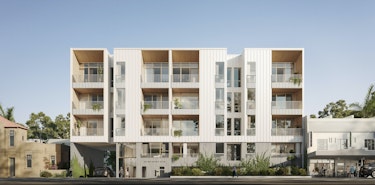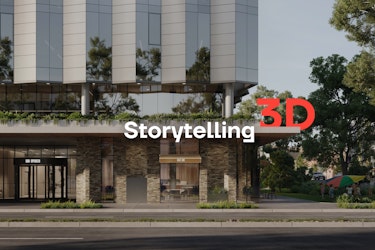Success in architecture involves more than just creating a structure that complies with the requirements of the client; it also involves improving the quality of life for those clients. Relationships are the foundation of every business, and architecture is no exception.
The role of the architect is to understand that narrative and transform it into a design. Architectural visualization and visual storytelling are integral parts of the process of turning this concept into a finished structure. It is the design process itself that distinguishes two architects from one another.
Each architect must explain the approaches used as well as their design decisions. In the eyes of their clients, an architect's work is essentially esoteric. Therefore, an architect needs to be able to use 3D architectural visualization to convey a story so that their clients can fully understand what their ideas would look like in practice.

Each architectural narrative is unique.
There are numerous ways to tell each architectural story because no two are ever the same. The clients will have numerous inquiries about the design of the structures, a specific location in the site plan, and other topics.
All these inquiries require responses, but even more crucially, the clients must comprehend those responses. Every narrative is made up of connected events that form a storyline. These things are the architectural aspects in terms of architecture, such as the concept, shape, or intended usage of a structure. Using architectural animation and visualization, the architects can walk their clients through the story and show them each stage of the project.
The clients can more clearly comprehend the narrative surrounding their original ideas thanks to that picture. To help their clients visualize the history of each project that was found on the clients' ideas, the architects employ architectural renderings and animation as aids.
By using these technologies, the architects are better able to tell their story and stand out from the competitors by grabbing the attention of their clients. The more effectively an architect can explain their story, the more successful their visual storytelling will be.
.png?ixlib=gatsbyFP&auto=compress%2Cformat&fit=max&q=75&w=375)
Architectural Renderings and Videos
An architect can vividly convey some elements about a design project by employing architectural renderings and videos. The audience will then have a clear vision of what their project will look like.
An architect can utilize movies to explain things and lead their clients through the story because utilizing just the image isn't nearly enough to explain why he did certain things with the design.
The clients can compare the architect's intentions to what they had in mind and completely comprehend the architect's intentions. Clients can engage with the narrative through architectural visualization and videos.
Interactive 3D storytelling
Utilizing interactive 3D is the most efficient technique to communicate a story about architecture. Interactive 3D presentations are a crucial component of architectural storytelling because they give clients the chance to interact with their project concepts in both a virtual and real-world setting.
The fact that the clients can interact with the models brings them closer to the project and improves their understanding of it. The relationship between the client and the architect is significantly bolstered by this comprehension and interaction.
It is safe to state that 3D architectural presentations are essential for letting clients know about the architecture's design. Interactive 3D storytelling actually greatly enhances design communication since it provides clients with a lifelike 3D environment that allows them to see not only the primary project but also its surroundings from any perspective.
The success of projects as well as the client-architect relationship are substantially enhanced by such a cooperative and fluid contact between the two parties.
Architectural visualization trends in 2022
New approaches necessitate new trends since architectural visualization plays such a significant role in architectural storytelling. As new techniques and technologies are developed every year, architectural visualization gets faster and better. Project presentation has changed significantly as a result of the development of real-time rendering software.
Photo-realistic rendering is putting up some very beautiful storytelling with game-like presentations, interactive configurators, augmented and mixed reality worlds if you combine these applications with supporting technologies like graphics cards, projectors, and virtual reality headsets.

Both the client and the architect are thinking about their own stories. The client brings the initial concept to the architect, who then works to develop it into a comprehensive project design.
The architect then helps their clients visualize how their fundamental concept will appear in real time and space by using storytelling abilities and technological tools.
The entire workflow is simplified by this method since clients won't be dissatisfied that the final design isn't exactly what they had in mind and architects won't have to wait until the project is complete to gain feedback. Because so much depends on it, visual storytelling is a crucial component of project presentation in the modern era.
Because explaining such technical ideas in writing or on a computer screen can be quite difficult, 3D, visualization, and storytelling help both architects and clients understand technical ideas. The way architects exhibit their designs has been somewhat transformed by visual storytelling, which has also evolved into a communication tool between the two parties. Single platform presentations are becoming a regular practice, and things can only get better from here.
By communicating their story visually, architects can more effectively engage their clients by illustrating their vision through architectural visualization. It's safe to say that the way architects engage with clients and show their projects has changed as a result of architectural storytelling, which opens a whole new range of ideas and possibilities.
